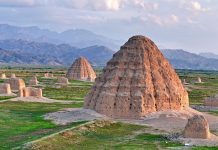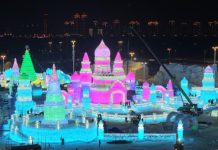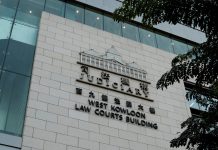Across China, local governments are implementing the urban renewal guidelines issued by the general offices of the Central Committee of the Communist Party of China and the State Council, the country’s highest state administrative organ, in early May. These policies target the transformation of aging cities through several key pillars including renovating old residential communities, upgrading urban infrastructure, restoring ecological systems, preserving historical heritage and optimizing city functions. The campaign sets 2030 as its benchmark year, by which time Chinese cities are projected to become models of high-quality urban living.
This nationwide renewal effort represents a strategic shift in China’s urbanization approach. As of late 2024, the country’s permanent population urbanization rate, which measures the ratio of permanent urban residents relative to the total population, had reached 67 percent, with 940 million people permanently settled in urban areas. China’s urban development is moving its focus from quantitative expansion to qualitative improvement.
The initiative specifically addresses several essential dimensions of urban development: structural optimization through smart planning, cultural continuity through heritage preservation and tangible quality-of-life enhancements for residents. By repurposing existing urban assets rather than pursuing new construction, the campaign embodies China’s transition to more sustainable urban development.
As nationwide urban development accelerates, many older residential communities are grappling with mounting challenges, including aging infrastructure, deteriorating housing conditions and inadequate public amenities. Compounding these issues, public service facilities—such as schools, hospitals, senior care centers and childcare providers—are often scarce or unevenly distributed, creating disparities between older neighborhoods and newer developments.
Urban renewal offers a solution by modernizing infrastructure, optimizing city layouts and strategically redistributing public services. These improvements will address residents’ growing expectations for high-quality amenities, elevate living standards and give the people a growing sense of fulfillment and happiness.
Enhancing both the urban environment and living standards will in turn stimulate consumer demand. Residents often seek better home upgrades, higher-quality services and improved leisure options—all of which invigorate the consumer market and inject new vitality into economic growth.
Moreover, urban renewal requires substantial investment and large-scale construction, driving growth in related industries such as building materials and machinery. This expansion not only creates employment opportunities but also provides immediate momentum for broader economic development.
China’s urban renewal initiative bases its progress on pilot projects. The Ministry of Housing and Urban-Rural Development carried out pilot undertakings in 106 communities nationwide from 2019 to 2024, upgrading corroded municipal pipelines, creating more parking spaces, building facilities for senior care and childcare, as well as installing elevators in existing residential buildings.
The pilot projects revealed that protecting historical and cultural heritage remains a key challenge in urban renewal efforts. Many cities contain valuable historical buildings, neighborhoods and cultural sites that preserve urban memory and tradition. However, some early renewal attempts saw century-old structures demolished or make way for modern high-rises.
The latest guidelines now explicitly mandate cultural preservation, prohibiting further demolition of historical neighborhoods and requiring comprehensive surveys of older communities, blocks and industrial sites to establish strict protection zones.
By continuously optimizing urban functions and enhancing urban living environments, cities can better meet residents’ needs. While China has long championed sustainable urban development, as a developing country, challenges of uneven, uncoordinated growth persist. The ongoing urban renewal campaign is an essential pathway for China to achieve more balanced and sustainable urbanization. –The Daily Mail-Beijing Review news exchange item





